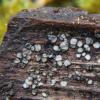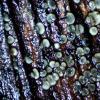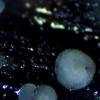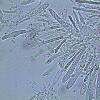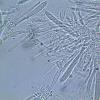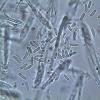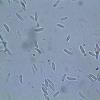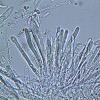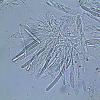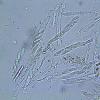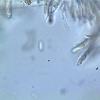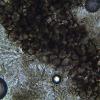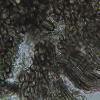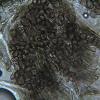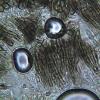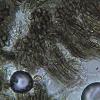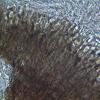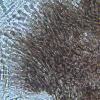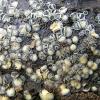
31-12-2025 19:27
Collected from loamy soil, at waterside (completel

30-12-2025 16:44
Pascal DucosBonjour,Une anamorphe rose stipitée, très nombre

30-12-2025 17:14
 Bernard CLESSE
Bernard CLESSE
Bonjour à toutes et tous,Pourriez-vous aider Albe

29-12-2025 10:15
Hulda Caroline HolteHello, I found and collected this propoloid ascom

30-12-2025 09:04
Hello.A Pyrenomycete sprouting sparsely but very d

29-12-2025 17:44
Isabelle CharissouBonjour,J'aimerais savoir si d'autres personnes au

12-11-2021 00:03
Lepista ZacariasHi everybody,A week ago in my fiels trip I noticed
 Hola tengo esta Mollisia que en principio pensaba que seria M. cinerea, pero al KOH es negativo, puede ser M.hydrophyla ?????.
Hola tengo esta Mollisia que en principio pensaba que seria M. cinerea, pero al KOH es negativo, puede ser M.hydrophyla ?????.Recogida en pino a unos 1600m.
0,80--0,93 diametro.
KOH negativo
IKI +, no maranja el asca
Parafisis x3--x4 (X6) apice redondeado
ascas de 50 x 6---50 x 7---52 x 6,5---53 x 6,4---58 x 7---60 x 7.
esporas de 8 x 2,6---8 x 2,8---9 x 2,5---9 x 3---10 x 2,7---10 x 3---11 x 2,9 (15x3).
Textura globosa, celulas del margen un poco piriformes miden 20--28 x 4--6
Un saludo
Rafael

Hello Rafael,
it is surely not M. hydrophila, which is confined to Phragmites (rarely other grasses may be), has more oil in the spores, a yellow KOH reaction (not always constantly) and masses of cristals in the medulla.
What you have there I can't say. Probably it is what I tend to call M. olivaceocinerea, the most common species of the cinerea-complex. Then you should see a little bit of oil droplets in the spores. If they are really completely empty, then I don't know. I don't think it is M. cinerea ss. str., which has smaller spores (6-9 µm, max. 10 µm long) and a bit different macroscopic appearance.
best regards,
Andreas

la camara del micro no permite captar muchos detalles, pero en los dos polos de las esporas se ven unos gotoitas muy pequeñas
Un saludo
Rfaeal

Hola Rafael,
in Mollisia olivaceocinerea the excipulum often becomes olivaceous-greenish with KOH and not grey as in the other Mollisia species. This is not a constant character, but when it is to see, it is a good hint for this species.
Also the hymenium becomes a bit cream coloured when slowly (!) drying. You can see that in the field in older apothecia.
best regards,
Andreas


